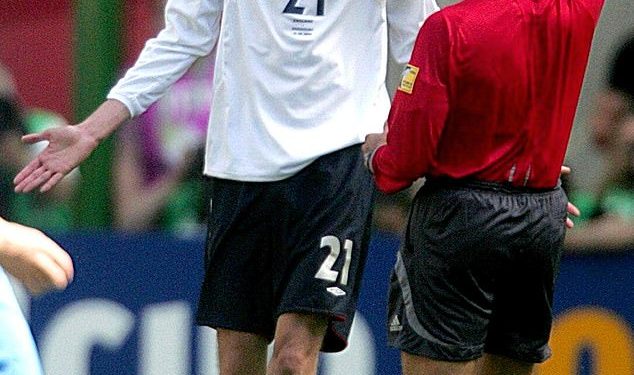If you want to know why a player is shown on a yellow card, there is no need to immerse yourself in the football regulations – take a look at its size.
The referees are more likely to book players who are larger than them, suggests research.
The academics who discovered the phenomenon say that this is a classic case of a Napoleon complex, or “short man’s syndrome”. And it is more likely to occur at the start of the game while the referees try to assert their authority.
The researchers analyzed the data of 2,340 games played in the Bundesliga, the best German league, comparing the faults, the cards and the peaks of the players and the referees. The results show that players are larger than the referee have 9.4% additional faults against them, and 7.2% more likely to obtain a yellow card, compared to situations where the managers and players of the match are at the same eye level.
The larger the height gap, the more likely a fault will be given and the main differences are in the first stadiums of the match. Players who are shorter than the referee are less likely to be in trouble, with a risk of 12.3% lower to be penalized, and a lower risk of 16.5% to obtain a yellow card. The researchers have granted allowances so that the great players are more likely to be defenders, who commit more mistakes.
The results reinforce a study five years ago in English football which suggested that referees of less than 6 feet were 20% more likely to distribute yellows than those who were larger.
The academics behind the study wrote in the Journal of Behavioral and Experimental Economics: “The referees resort more to sanctions in situations of physical inferiority, and players tend to be penalized more often in terms of called faults and yellow cards when they exceed the referee by height.
“This bias is consistent with the complex concept of Napoleon, where shorter individuals show compensatory behavior for the lack of social domination by size. Our results suggest that sanctions are used as a substitute for the authority acquired by stature.
The referees are more likely to book players who are larger than them, suggests research. In the photo: the referee Marco Rodriguez shows 6 feet 7 peter Crouch in Yellow

The results reinforce a study five years ago in English football which suggested that referees of less than 6 feet were 20% more likely to distribute yellows than those who were larger. In the photo: referee Thomas Bramall shows the defender of Bournemouth Dean Huijsen a yellow card in the Premier League
When a military commander told Napoleon Bonaparte, who had 5 feet 6 inch, that he felt uncomfortable to be so bigger than his emperor, Napoleon would have replied: “You can be bigger, but I am bigger.”
This led to the theory that short men compensate for a disadvantage of height by being more aggressive and competitive.
The authors of the study, of the University of Hagen in Germany, warn a similar “small man” behavior can be found in other horizons.
They wrote: “ The presence of a height bias among the highly trained and supervised referees in professional sports suggests that similar biases could be omnipresent in other professional contexts such as business meeting rooms, job committees and performance assessments.
“Understanding these biases is crucial because they can have an impact on career opportunities and labor dynamics.”


